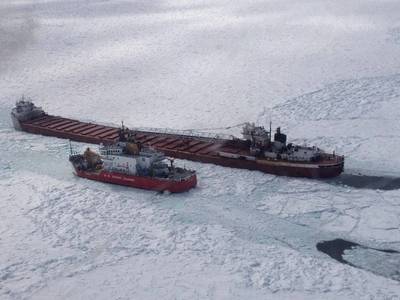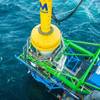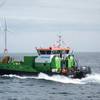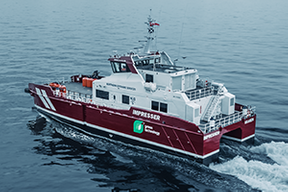The ice that brought shipping on the Great Lakes to a virtual standstill last winter cost the economy more than $700 million and nearly 4,000 jobs and has prompted Lake Carriers’ Association (LCA) to call for construction of a second heavy icebreaker to partner with the U.S. Coast Guard’s Mackinaw to keep the shipping lanes open in the harshest of conditions.
The winter of 2013-14 was so brutal that U.S.-flag cargo movement between December 1, 2013 and May 30, 2014 to plummet nearly 7 million tons compared the same period in 2012-13, LCA reported. At least two steelmakers had to curtail production and some power plants were extremely low on coal. The limestone trade did not resume in earnest until well into April and U.S.-flag lakers suffered nearly $6 million in damage trying to resupply customers. Eventually, three vessels not scheduled to operate last year were fitted out to help overcome the shortfall in deliveries during the ice season.
“At a minimum, Congress must authorize construction of a twin to the Mackinaw so we can have two high-powered American icebreakers on the Lakes,” said James H.I. Weakley, President of LCA. “Another 140-foot-long icebreaking tug must be assigned to the Lakes at least until the service life extension program currently underway for the six existing 140s is completed later this decade.”
The U.S. Coast Guard has nine icebreakers on the Lakes, one of which is currently undergoing modernization at the Coast Guard yard in Baltimore and will be unavailable this ice season.















